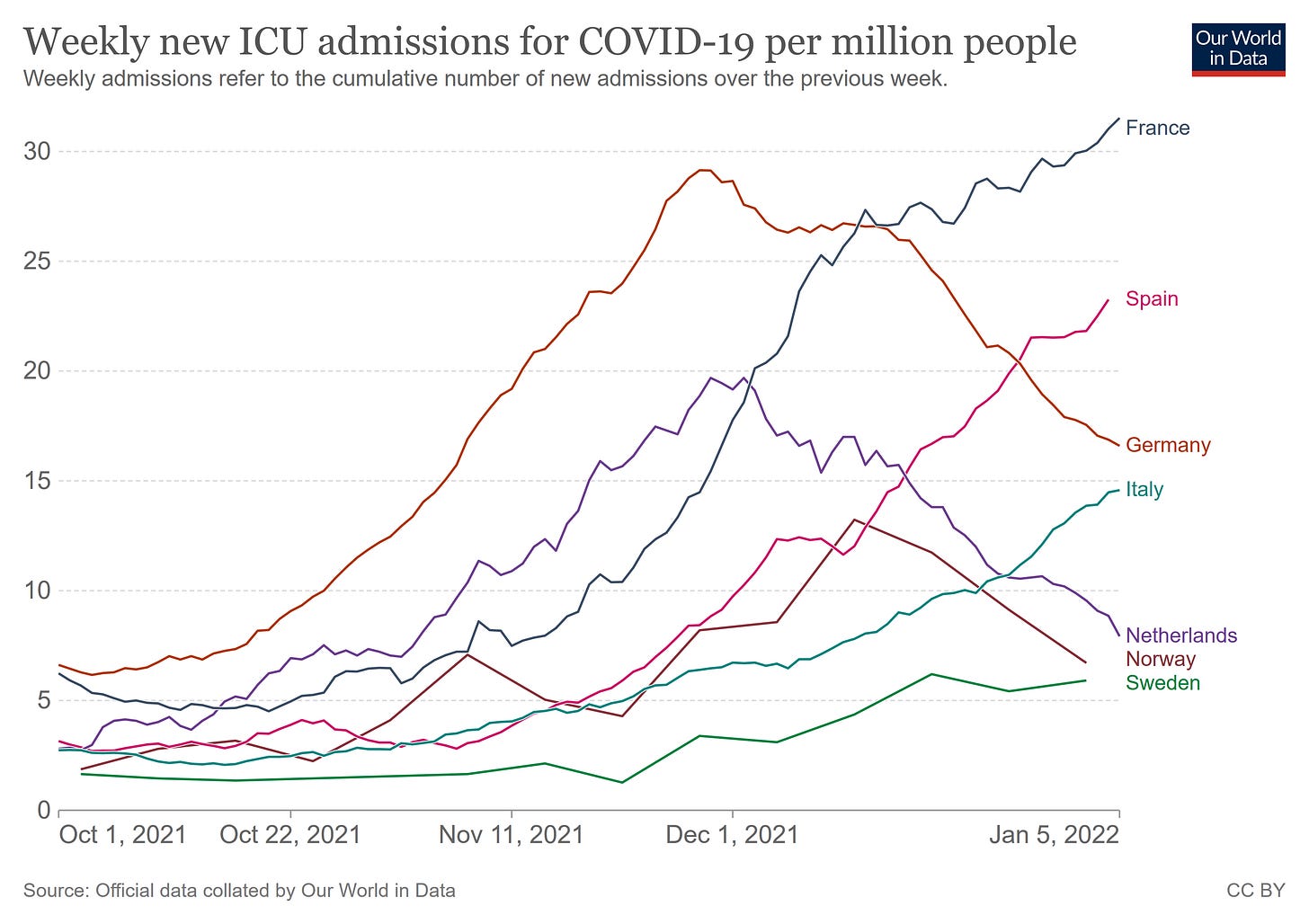The question that should always be asked of any public policy is “Does/Did it work?”
If a policy shows apparent success in one country, it bears consideration for use elsewhere. If a policy shows apparent failure in one country, it warrants rejection for use anywhere. Such a stance allows us to be at least somewhat objective in considering what makes for good policy, as the metrics of policy success arguably are driven by data and not by political ideology.
It is with this thought in mind that we should periodically turn our attentions to the COVID pandemic experience of Europe. With a large number of countries, all of which possess “first world” economies and are endowed with significant technological and medical resources, Europe gives us a good cross section of COVID policy impacts and consequences.
Against the backdrop of the Omicron and Delta variants, that cross section can be summed up succinctly: failure. No matter the policy, no matter the variant, the virus continues to do as it pleases.
The virus is going to virus, no matter what.
Vaccines Are Popular
The one policy that has been broadly adopted across western Europe especially is vaccination. Virtually every country is highly vaccinated, with Spain leading the way at 81%
Even as French President Emmanuel Macron is going on fascistic tirades about the “unvaccinated” in his country, and is pushing to exclude those who are not fully vaccinated from virtually all of French society, the data shows that 73% of French citizens are fully vaccinated.
Vaccines Have Not Worked, Anywhere
While getting people to take the vaccines may be a policy success in Europe, the result of mass vaccination against COVID itself is rather far removed from success. As the rising and falling of daily case counts shows, COVID has moved through Western Europe without much regard for each country’s overall vaccination status.
Despite high vaccination rates for most of 2021, Europe has had successive waves of COVID infection, with no apparent correlation to the vaccination status of Europeans.
Virus going to virus, but the COVID vaccines, it seems, are not going to vaccinate.
Omicron Is Everywhere, Except Where It Isn’t
By far the most remarkable aspect of the pandemic in Europe is the uneven distribution of Omicron infection.
Omicron, which has been projected to displace the Delta variant as the dominant COVID variant worldwide, has, after nearly two months, become the dominant variant only in the United Kingdom and France, while Austria and Germany are still largely battling Delta. Despite Omicron having been repeatedly reported as being far more transmissible than Delta, in reality its dominance for the most part remains rather muted. By comparison, once Delta took hold in Europe it quickly rose to dominance everywhere within the same broad time frame.
Omicron may become the dominant variant across Europe, but to date it has not done so—an indication that its initial transmissibility might be somewhat overstated by the media.
Cases Are Up Everywhere. Hospitalizations Are Not.
The most striking difference among European countries’ pandemic experience of late is the wide variation in hospital admission rates. Currently, Spain has the highest rate of new hospital admissions for COVID, followed by the UK, with Germany actually experiencing declining hospital admission rates.
While the UK and France hospital admissions stand at odds with the prevailing assessment that Omicron is more mild than Delta, that assessment is apparently confirmed by Spain, and also Italy and Belgium, where Delta remains dominant.
The data is muddled even further when one focuses on ICU admissions—an indication of severe COVID infection.
Even though Spain has a much higher hospital admission rate than France, more French patients are winding up in ICU than Spanish patients, and while ICU admissions are rising in Italy, at this juncture fewer Italians are winding up in ICU than Germans.
People Are Dying From COVID, But Not Where You Might Expect Them
While one might expect there to be a rough correlation among hospital admissions, ICU admissions, and mortality (working on the broad basis that such represents an increasing spectrum of disease severity), the mortality rates in Europe again cut across the grain.
While Germany has a much lower rate of both hospital and ICU admission than France, it has recently had a higher mortality rate than France—more French end up in hospital, and more Germans end up in the grave. Sweden, on the other hand, has had one of the more persistently steady (and low) mortality rates for COVID throughout most of the fall and winter thus far.
The Trend Is There Is No Trend
What the European data shows most clearly is that, regardless of what the narrative might claim, lockdown policies, vaccination policies, even masking policies are ultimately ineffective at mitigating the spread and effects of COVID. The virus appears determined to work its way through the human population in its own time and in its own way, and governments and health agencies are able to do little but watch.
What the data also shows is that, contrary to the monolithic qualities of the prevailing narrative, the situation is constantly shifting and changing. The state of the pandemic is in many regards evolving faster than the virus itself. This should stand as a cautionary to anyone charged with devising public health responses to the virus—the policies inevitably are tasked with hitting a rapidly moving target, and governments, health agencies, and even the major pharmaceutical companies are eternally stuck two steps behind the virus, able only to react to what the virus does.
Anyone who insists that this vaccine is “the best defense”, or that this mandate is “the best defense” is simply wrong. Even if he or she might have had a case for being right yesterday, by tomorrow he or she will not.
Because the virus is always going to virus.









